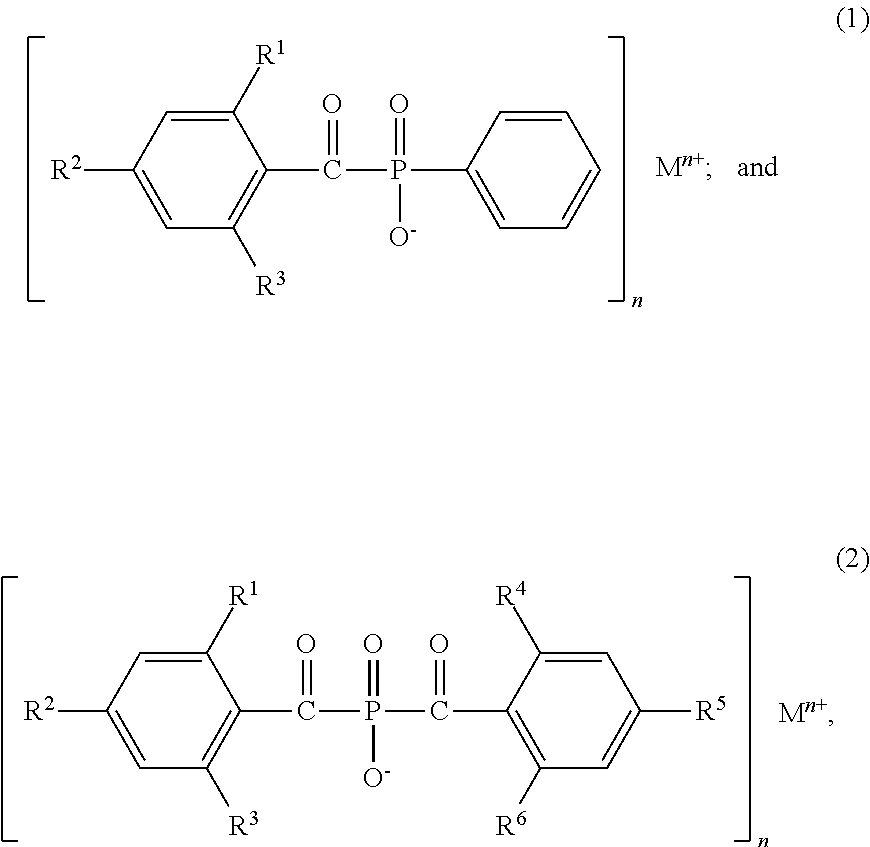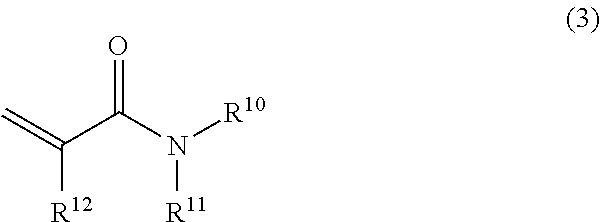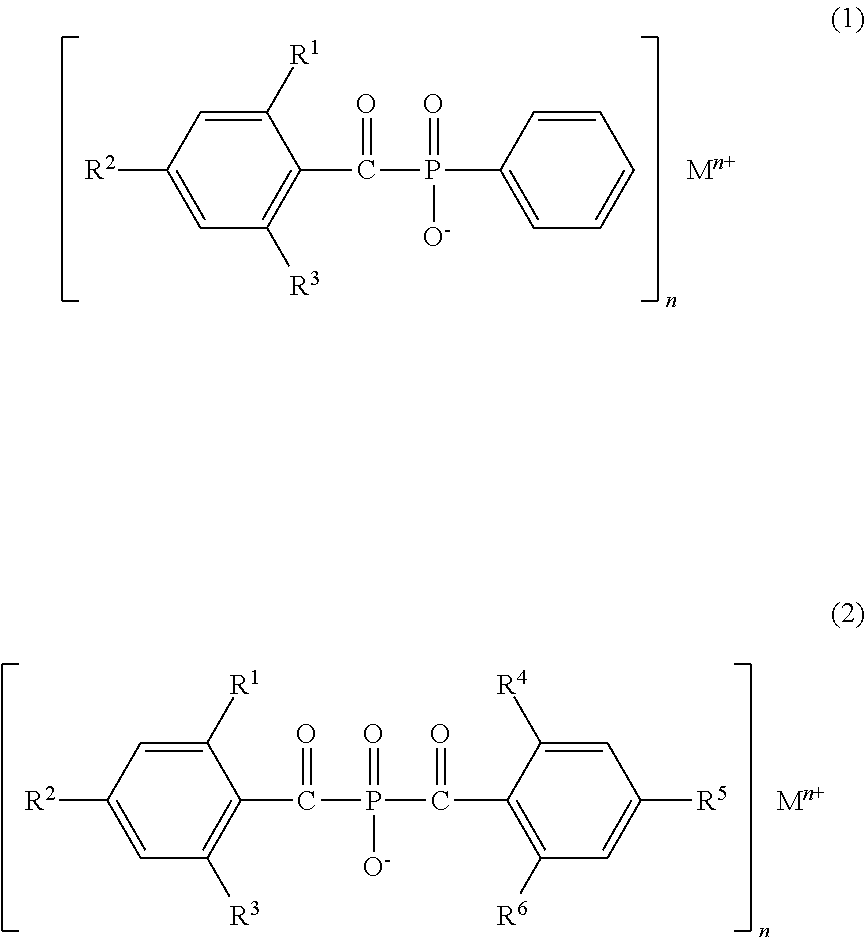Non-solvent dental adhesive composition
a dental adhesive and non-solvent technology, applied in dental prosthetics, dental impression caps, dentistry, etc., can solve the problems of insufficient curing or delay, no adhesiveness of restoration materials to tooth structures, and insufficient curing of filling materials and crown restoration materials, etc., to achieve high initial bond strength, high bond durability, and high dentin cohesive failure rate
- Summary
- Abstract
- Description
- Claims
- Application Information
AI Technical Summary
Benefits of technology
Problems solved by technology
Method used
Image
Examples
examples 1-1 to 1-16
and Comparative Examples 1-1 to 1-5
[0183]Dental bonding materials of Examples 1-1 to 1-16 and Comparative Examples 1-1 to 1-5 were prepared with the use of the above components by mixing and dispersing the components described in Tables 1 and 2 at ordinary temperature. Then, the tensile bond strength to dentin and the dentin cohesive failure rate were measured according to the methods described below for the dental bonding materials obtained. Tables 1 and 2 show the contents (parts by mass) of the components of the dental bonding materials of Examples and Comparative Examples and the test results for Examples and Comparative Examples.
[0184][Tensile Bond Strength to Wet Dentin]
[0185]The labial surfaces of bovine mandibular incisors were each ground with #80 silicon carbide paper (manufactured by Nihon Kenshi Co., Ltd.) under running water to obtain samples with an exposed flat dentin surface. Each of the obtained samples was further ground with #1000 silicon carbide paper (manufactur...
examples 2-1 to 2-16
and Comparative Examples 2-1 to 2-5
[0194]Self-adhesive dental composite resins of Examples 2-1 to 2-16 and Comparative Examples 2-1 to 2-5 were prepared with the use of the above components by mixing and kneading the components described in Tables 3 and 4 at ordinary temperature. Then, the tensile bond strength to dentin was measured according to the method described below for these self-adhesive dental composite resins. Tables 3 and 4 show the contents (parts by mass) of the components of the self-adhesive dental composite resins of Examples and Comparative Examples and the test results for Examples and Comparative Examples.
[0195][Tensile Bond Strength to Wet Dentin]
[0196]The labial surfaces of bovine mandibular incisors were each ground with #80 silicon carbide paper (manufactured by Nihon Kenshi Co., Ltd.) under running water to obtain samples with an exposed flat dentin surface. Each of the obtained samples was further ground with #1000 silicon carbide paper (manufactured by Nih...
examples 3-1 to 3-14
and Comparative Examples 3-1 to 3-5
[0204]Dental bonding materials of Examples 3-1 to 3-14 and Comparative Examples 3-1 to 3-5 were prepared with the use of the above components by mixing and dispersing the components described in Table 5 at ordinary temperature. Then, the tensile bond strength to dentin was measured according to the method described below for the dental bonding materials obtained. Table 5 shows the contents (parts by mass) of the components of the dental bonding materials of Examples and Comparative Examples and the test results for Examples and Comparative Examples.
[0205][Tensile Bond Strength to Dry Dentin]
[0206]The labial surfaces of bovine mandibular incisors were each ground with #80 silicon carbide paper (manufactured by Nihon Kenshi Co., Ltd.) under running water to obtain samples with an exposed flat dentin surface. Each of the obtained samples was further ground with #1000 silicon carbide paper (manufactured by Nihon Kenshi Co., Ltd.) under running water. A...
PUM
| Property | Measurement | Unit |
|---|---|---|
| solubility | aaaaa | aaaaa |
| solubility | aaaaa | aaaaa |
| solubility | aaaaa | aaaaa |
Abstract
Description
Claims
Application Information
 Login to View More
Login to View More - R&D
- Intellectual Property
- Life Sciences
- Materials
- Tech Scout
- Unparalleled Data Quality
- Higher Quality Content
- 60% Fewer Hallucinations
Browse by: Latest US Patents, China's latest patents, Technical Efficacy Thesaurus, Application Domain, Technology Topic, Popular Technical Reports.
© 2025 PatSnap. All rights reserved.Legal|Privacy policy|Modern Slavery Act Transparency Statement|Sitemap|About US| Contact US: help@patsnap.com



